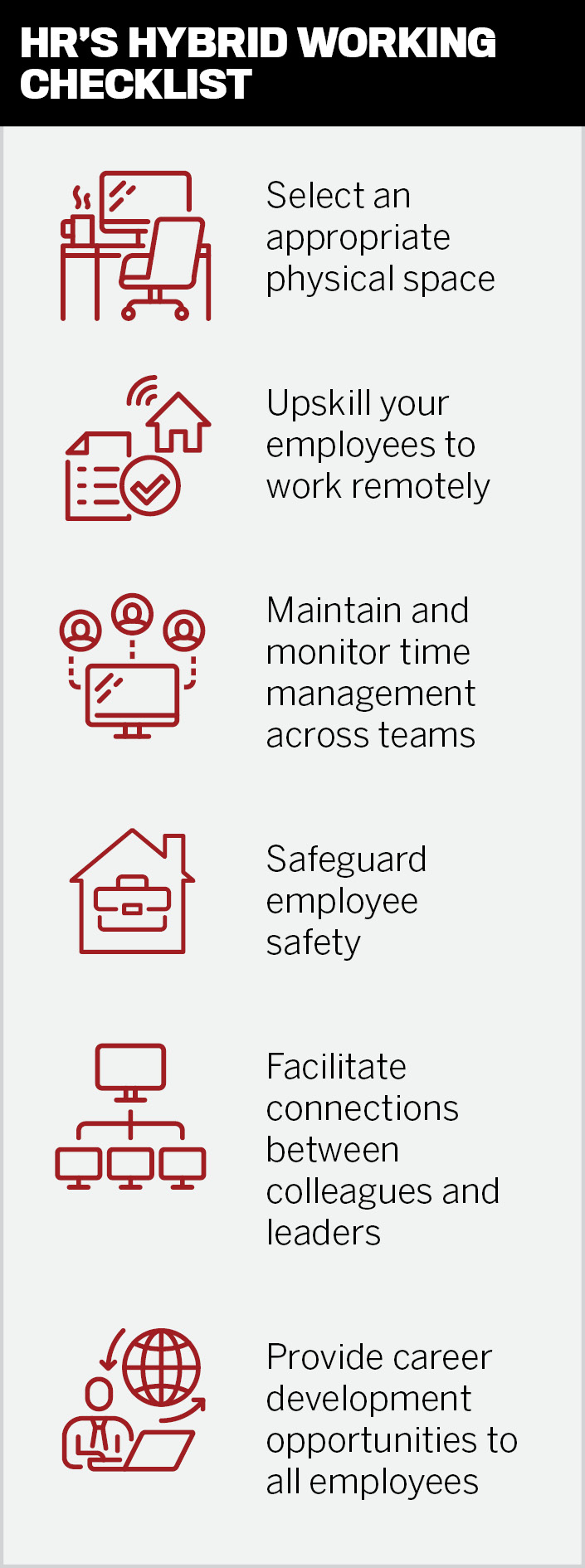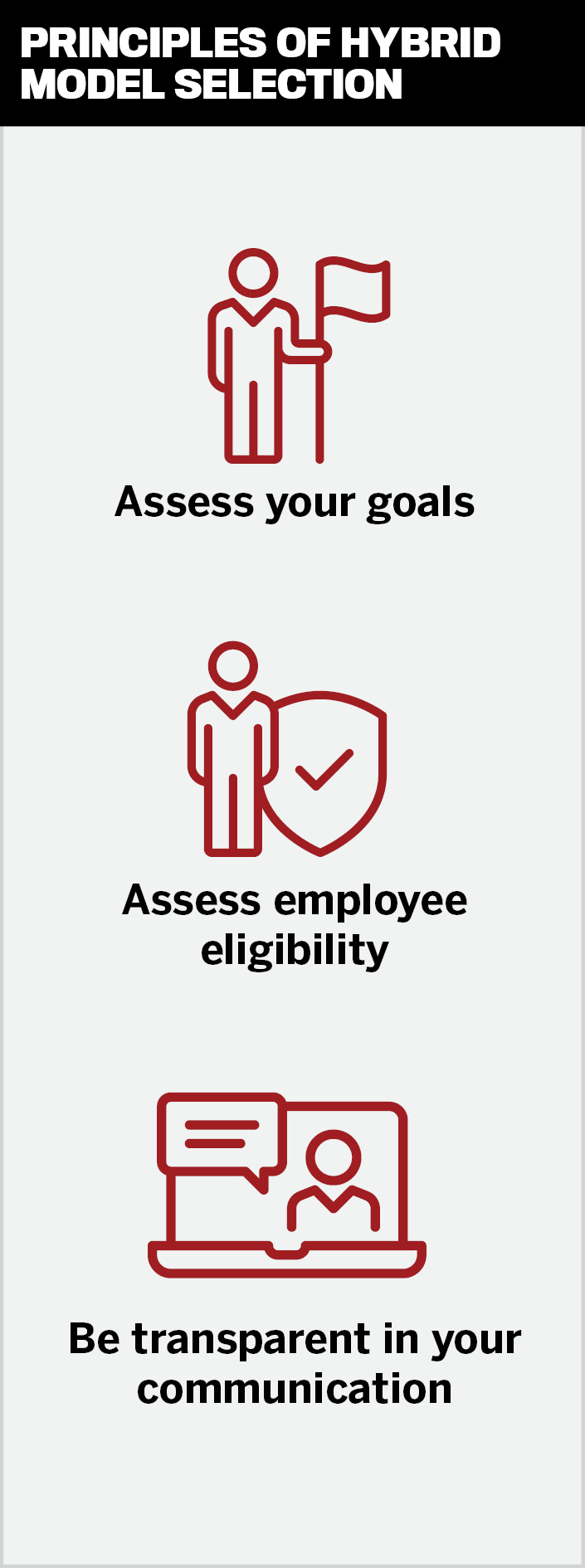Hybrid models are gaining popularity – but are they right for your people?

Remote working truly is here to stay – but are we really ready to wave goodbye to our offices forever? There’s no denying that remote working quite literally saved the day during the height of the COVID-19 pandemic. Employers had to act quickly and decisively, changing their organizational strategies overnight in order to remain relevant and profitable. Now, as we emerge from the chaos, employees are unwilling to return to an archaic nine-to-five, in-office structure. Instead, teams are calling for hybrid models – splitting their time between the office and their homes. But where to begin? How do you know if remote work would work for your organization?
HRD recently hosted a virtual roundtable in conjunction with KPMG in Canada, looking at the most effective ways to implement a hybrid model in your organization – and debating what exactly the future of work will look like post-pandemic.
“Employers need to really think why they should consider a hybrid model,” explained Doron Melnick, National Lead for People and Change Consulting Services at KPMG. “There’s three overarching principles that should really be front of mind.

“Finally, there’s the important principle of communication. Generally, we encourage organizations to communicate this model transparently. As an employer, it’s okay that you don’t have all the answers – but that you can figure it out as you go.”
Hybrid work was touted an employee benefit – as a middle ground between remote and in-office models. But it would be remiss to think that remote work only benefits the employee. In reality, hybrid models are an asset to both the leader and the worker. Recent research from KPMG found that 77% of Canadians like the idea of a hybrid workplace model – however, 81% believe that their managers need better training to be able to effectively manage this.
“From an employee perspective, the pandemic highlighted the difficulties of balancing work and life,” added Sheryl Helsdon, HR Senior Director at Oracle Canada. “Previously, those challenges were somewhat hidden from employers – now, they’ve been brought to the forefront. The advantages for employees include more flexibility to balance what they’re going through at home with their work responsibilities in a more effective manner. On the employer’s side, there’s certainly advantages financially around reduced real estate footprints. When you allow employees to work at their chosen time and relieve some of those work-life balance pressures, you get more productive employees, happier employees.”
Not only do hybrid models offer that much needed flexibility, they’re a turnover killer. The nature of remote working has led to an expansion of the global talent market – meaning more options for employers and employees. If you’re not offering hybrid working, if you’re demanding that teams come into the office five days a week without any flexibility, you’re going to lose out on both potential and current talent.
Latest News
It seems at first glance to be a win-win - but hybrid models can present certain challenges in themselves. For some employees, there’s simply no substitute for in-person, face-to-face collaboration. Even with the very best workplace tech, it’s difficult to recreate those watercooler moments that so many teams thrive on.
“Well, I know I can’t wait to get back into the office,” added Katelin Mailer, Vice President, Human Resources for Lactalis Canada. “That’s something that I’m very much craving – having that human connection and interaction. I think that’s one of the primary purposes of organizing and designing our office to facilitate an engaging environment. One that focuses on how to build connections among our employees. Whether that be collaboration within teams, across teams, formally or informally, that’s something we know a lot of our new hires are definitely missing out on – getting to know others throughout the organization that they may not interact with every day.”
The trick in maintaining a healthy hybrid working model is in curatorship. It’s simply not enough to roll out a one-size-fits-all plan, with no communication or feedback, and expect everyone to jump onboard. For Helsdon, it all comes down to enabling a high-level of flexibility across the organization – being fair and equitable as much as you can.
“There may be different levels of flexibility within an organization across different teams,” she explained. “Some teams have to be customer-facing, they need to go on-site with the customers. Other teams need to be at the office because of the nature of their role, however, providing a lot of support and tools for employees and managers goes a really long way.”

“We want people to grow, to learn, and continue to have the career development that everybody wants no matter where they work - whether it’s remote, whether it’s in the office, whether it’s a bit of both,” continued Helsdon. “It’s all about making sure that we’re really tapping into getting the best out of our folks and giving them what they’re looking for from a career development perspective.”
From a leadership standpoint, the past few months have been incredibly tough. How do you continue to support a team of tired, jaded employees, when you yourself are also tired and jaded? How has the pandemic upended traditional leadership characteristics, twisting and turning ideals like truth, compassion, and empathy into everyday necessities?
“Across the board, we’re seeing leaders who are more attuned to the purpose of the organization, more attuned to values, and valuing workers,” added Doron. “Frontline workers, corporate services, wherever you work in the business – there’s simply been an increase in attention. I think leaders have been more deliberate in how they communicate and how often they communicate. Now, we also see this added apprehension about the return to the office. I know employers would love to see everyone together again – but they also understand that may not necessarily work for all employees. They don’t want to appear too heavy handed. The approach we’re seeing leaders take has been very empathetic. I would say that many leaders want to come across as supportive in order to empower employees, to show that they trust their workers. And, given that trust, people will make the appropriate choices - not just for themselves but for their teams too.”
For more insights into how to build a hybrid workforce, check out KPMG in Canada's new eBook: A Hybrid Workplace guide.






